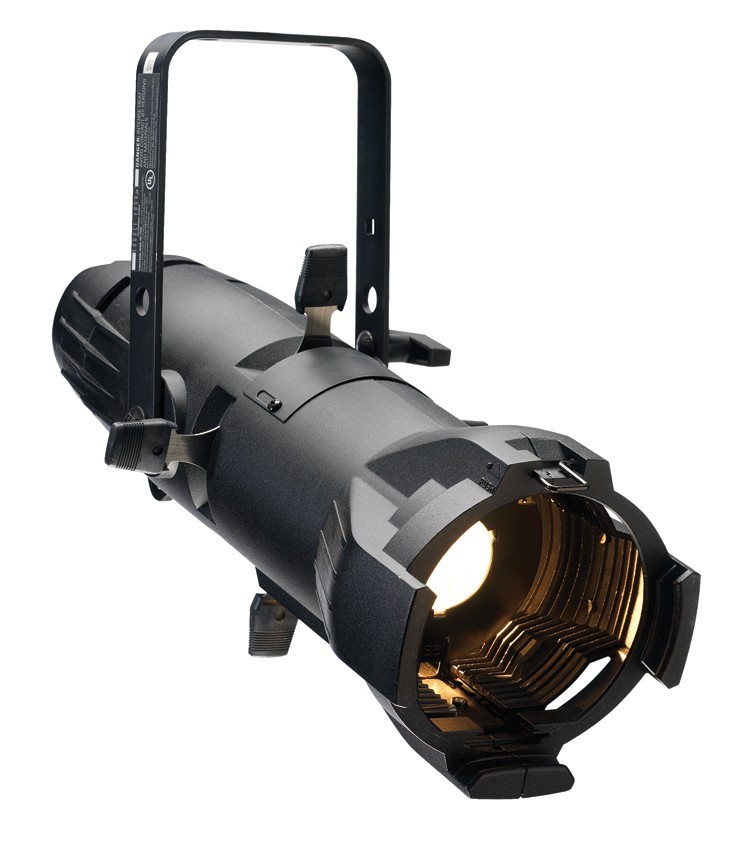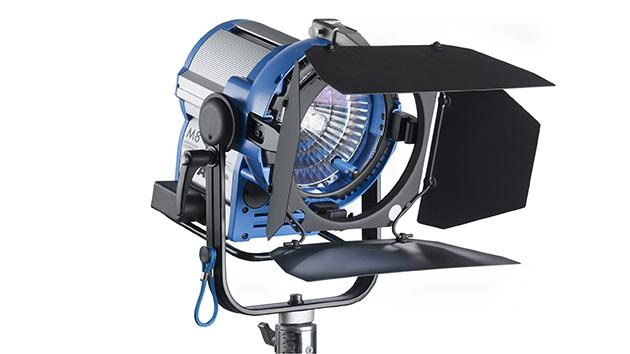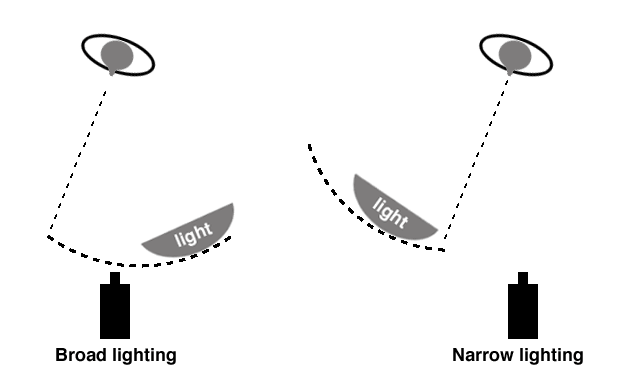Jim Krause | Classes | C228 Multi-Cam TV Studio Production 1
Week 5
Announcements & Updates:
- This week and next - Split Labs: We'll cover audio, lighting and carry out a 4-part, 2-week rotation. You'll produce a short show (Studio 7 Profiles) while getting practice directing, running the Chyron and prompter, working the audio console, and serving as host and talent.
- Audio/Lighting Quiz is in two weeks (The week of March 1).
Readings
- This week: Cybercollege lighting units: 37, 38, & 39 (Audio)
- Next week: Cybercollege lighting units: 27, 28, 29, & 30 (Lighting) & the Arri Lighting Handbook
Please look at Studio 5 Profiles, this what we'll be producing this week and next.
Studio 5 Profiles (3 min)
You'll need to bring in an object you can tell a story about. Please dress for the camera (at least from the waist up).
Lighting
Here are a few examples of floor plans & lighting plots:
Many TV studios are now using LED and floursecent fixtures for their news lighting.
The Lighting Triangle
3-point lighting (the lighting triangle) is ideal for portraiture and includes:
- Keylight: Primary light source. Illuminates the basic shape of the subject
- Backlight: helps separate the subject from the background, creates a figure-ground relationship.
- Fill light. Fills in dark areas. Slows/minimizes the falloff.
A 4th element could be added:
- Background or Set lights. These set mood, locale etc of scene
The lighting triangle is ideal for portraiture, such as when a subject is positioned facing one direction. But it doesn't always work for all TV/stage applications. A talk show host doing an opening monologue or a stand-up comedian typically turn their gaze to work the entire room. These setups often have multiple key and back lights so not to favor one particular angle.
Types of lighting instruments - Studio Lighting Instruments generally fall into two categories:
- Spotlights
- Floodlights
Lighting coherence or quality: Spotlights generally produce hard light, while floodlights produce soft light.
Spotlights - Spotlights generally produce harder, or more focused light than floodlights. Three types often found include: Fresnel, Ellipsoidal, & Open faced.

Fresnel - usually ranked by wattage of lamp. Fresnel spotlights use fresnel lenses- these glass lenses have an easily indentifiable series of coencentric rings cut into them to focus the light.

Ellipsoidal - much more directional/focusable than typical fresnel spotlights. Examples include:
- Pattern projectors
- Follow spots

Open faced - In open faced lighting instruments, the lamp is housed in front of a reflector, but there is no lens to focus the light.
Floodlights - Floodlights create softer light than spotlights. Some types include:
- Scoops: Scoops are inexpensive and look a bit like ice cream scoops.
- Softboxes/lightbanks: A softbox or lightbank can serve as a very pleasing keylight for intimate (closer up) scenes and interviews. In a softbox, one or more lights are directed through a diffuser.
- Broad light: Creating a similar quality of light but with a brighter output than a softbox, broad lights are a series of lights (usually LED or flourescent) in a shallow rectangular fixture.
- Strip/cyc lights: These fixtures are designed specifically to light cycs and other backdrops. Newer versions feature variable color LED lamps.
Color temperature - We describe color temperature using the Kelvin scale. The color temperature is determined by type of lamp and can be shaped by colored gels.
Below are common lamps and their approximate color temperatures:
- Incandescent: bulbs include the classic "screw in" type bulbs and the studio counterparts can be quite large. They generate heat and become redder with age (3200k)
- Quartz or Tungsten Halogen: These are encased in a quartz bulb with halogen gas. They are smaller & retains its color temp (3200k)
- HMI: Hydrargyrum Medium-arc Iodide. They have the same color temp as the sun. (5600k) so are often used for outdoor lighting. They use arc lamps with ballasts and are not cheap. The small ones are sometimes called sun guns.
- Fluorescent: Professional models usually have gel kits to match popular color temperatures. Inexpensive, consumer flourescent bulbs usually have green tints but can work well when mixed with other lights.
- LED: LED lighting has come into popularity as they are relatively inexpensive, draw little power relative to the output and can be gelled to match popular color temperatures.
Indoor vs. outdoors
- 3200°K - Typical indoor color temp
- 5600°K - Average outdoor color temp - Remember that outdoor color temps vary throughout day. Can be anywhere from 3200°-6500°.
Lighting Control Equipment
Lighting Control Equipment can be broken down into 3 areas:
- Mounting devices
- Light shaping (Focus & spill control)
- Intensity and color controls
Mounting devices: In our studios we have a pipe grid & in Studio 5, there are also movable counterweighted battens.
- The pipe grid in Studio 5 and Studio 7 is stationary
- In most theatres and in Studio 5 there are battens that can be raised and lowered
- Lights are hung from pipes using C clamps & safety chains.
- Floor stands (aka C-stands) have a 5/8" stud. These are commonly used for field productions and in the studio, for lights that are needed closer to the ground.
Light Shaping controls:
- Lens/lamp focus. Most spots can be focused from wide to spot. This affects the beam size.
- Barn doors. Help control light spill. (For instance you can stop the back light from shining into the camera lens & causing lens flare.)
- Egg crates - these grids are often used in front of softboxes, broadlights, and lightbanks to reduce unwanted light spill and to help direct the light in a uniform direction.
- Flags. There are hundreds of different sizes and types of flags. A common size on large sets is 3' x 4'. These are usually mounted on a C-stand.
Intensity and color controls:
- Diffusers soften the light and reduce its intensity. Diffusers can come in the form of a cloth-like material (Tuff spun for example) or in the form of a gel.
- Scrims/screens - a mesh used to cover all or some of a light. Reduces output and softens light a tad.
- Gels - Colored gels and ND (neutral density) gels will reduce the output, without affecting the quality.
- Dimmers
Lighting Techniques
Cameo lighting - Background is black. Foreground (subject) is illuminated. (Like in Charlie Rose show)
Silhouette lighting - Background is illuminated. Subject is not lit. Create effect of dark figures against a background.
Broad verses Narrow or Downstage verses Upstage lighting
Placing the keylight: Broad (downstage) vs Narrow (upstage) lighting
Consider if you want broad or narrow lighting. Most interviews are shot portrait style- where the talent is slightly askew from the camera, typically facing an off-camera interviewer.
Broad lighting is when you position the key light on the camera side of the interviewee's primary vector. Narrow (also known as short) lighting is when you place the key light on the other side of the primary vector.

Examples:
- Lights Film School: upstage verses downstage lighting (video)
- Broad lighting examples
- Narrow lighting examples
ETC Console
- Manual | Supplement
- DMX: Digital MultipleX - digital communication protocol for lighting and stage instruments
- Fixture: light (intelligent lights can have different profiles)
- Dimmer: Switched circuit
- Channel: Name to control a dimmer
- Address: Unique number to control a specific attribute of fixture
LAB ---------------------------------------------------------------------------------------------------
Objectives: Give students time and practice so they can learn how to:
- Set cameras and lights for a simple talk show
- Create ID graphics on the Chyron
- Operate the prompter
- Run audio engineer
- Practice directing
- Serve as talent


